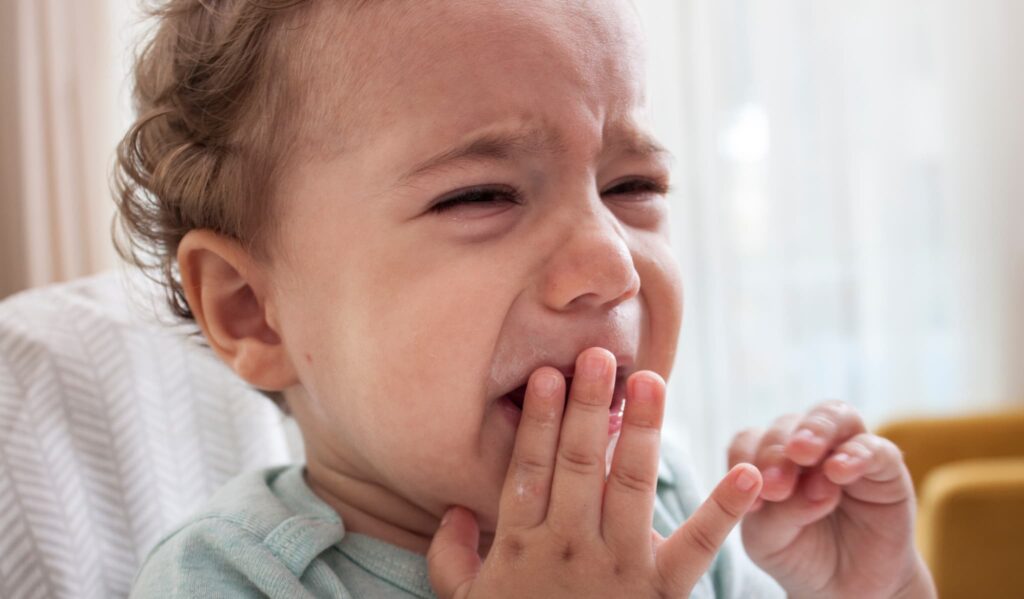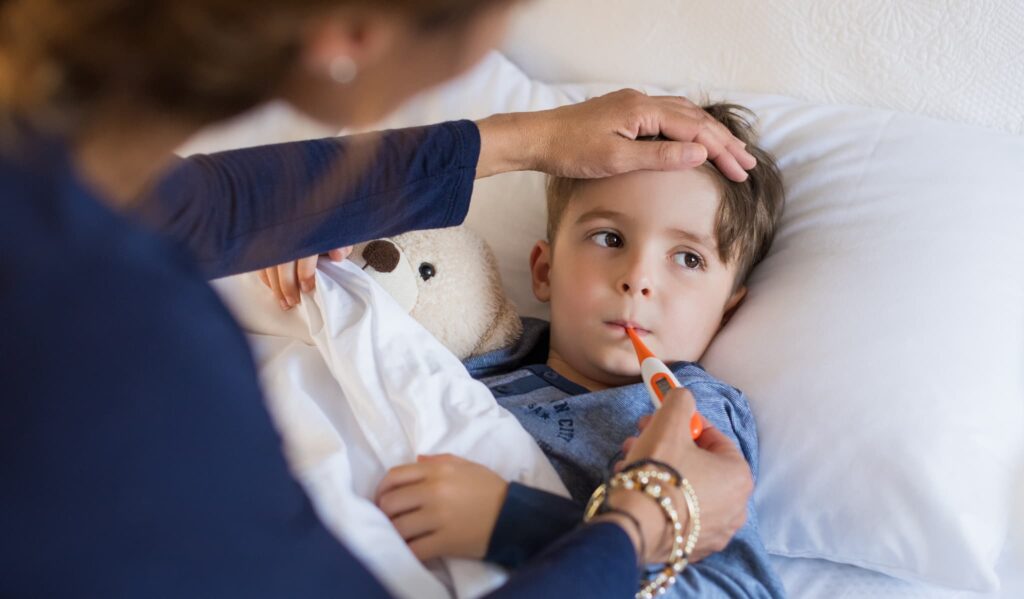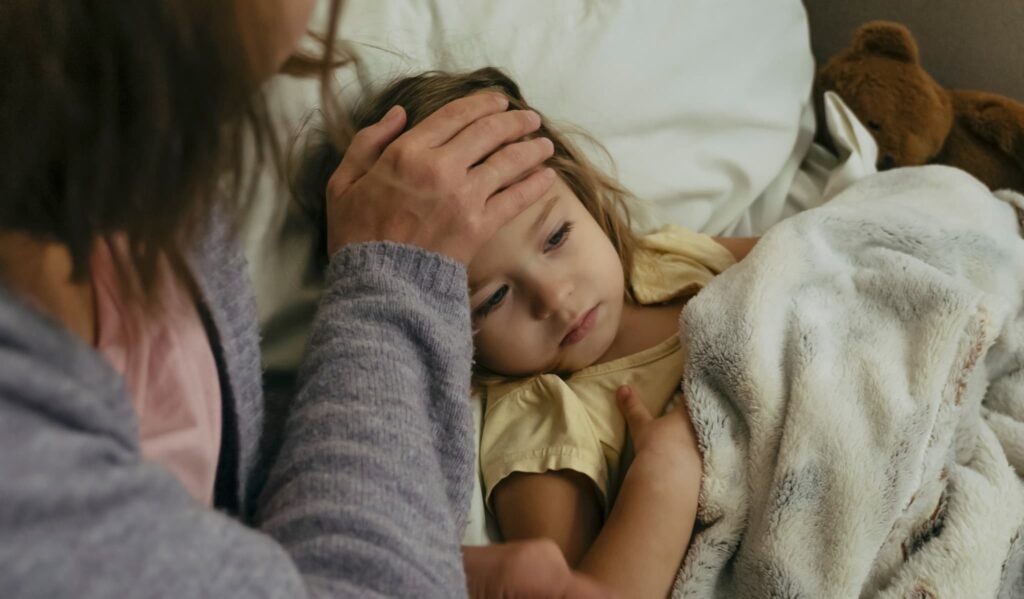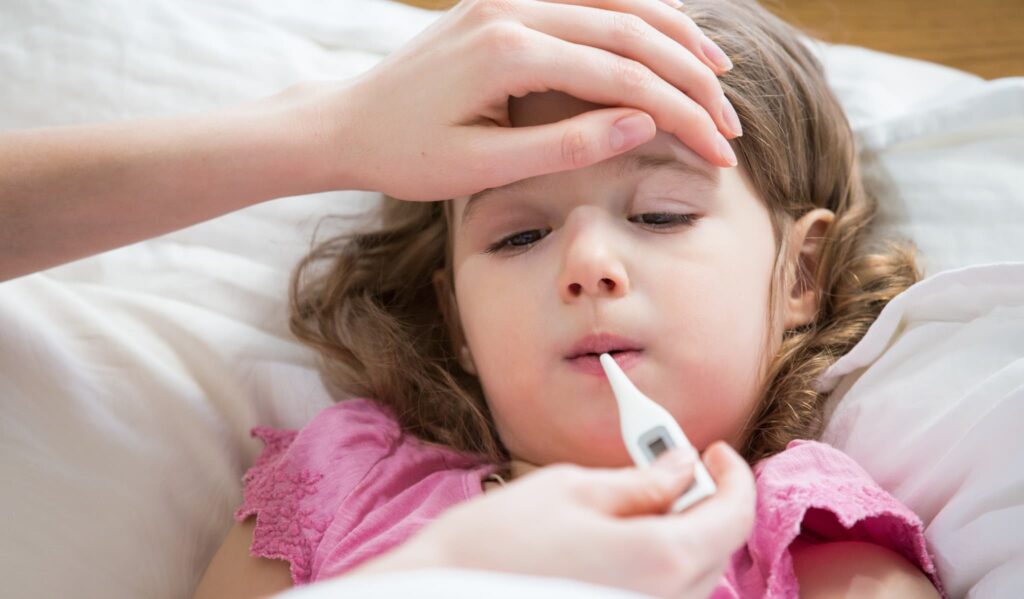Rising body temperatures can be concerning, especially in young children. While a fever is typically a natural response to infection, knowing when to observe, act, or seek medical advice can be difficult for parents and caregivers. A child’s immune system is still developing, making it more sensitive to changes in body temperature. For families, recognizing common fever symptoms in children and understanding what those symptoms indicate is key to providing timely, effective care. The stress and uncertainty that often accompany a child’s fever can take an emotional toll on parents, who are naturally concerned about making the right decisions quickly. Seeking professional support from trusted providers like ACA Acupuncture and Wellness can offer a holistic perspective, easing worries while promoting balanced healing approaches for families navigating these challenging moments.
Fever in children is generally defined as a body temperature of 38°C (100.4°F) or higher. It often signals the body’s immune response to viruses or bacteria. However, not all fevers require immediate intervention. Context matters. How the child behaves, what other symptoms accompany the fever, and how long it persists can provide insight into the cause. With seasonal flu, teething, viral infections, and even vaccinations among the common triggers, knowing what to watch for can reduce unnecessary panic and help ensure the right steps are taken.
Even during the emotional weight of managing a child’s high fever, small moments of calm can offer comfort. Gentle practices such as Chinese massage or supportive cupping treatment can help encourage relaxation, restore balance, and promote a sense of well-being for both parents and children. These holistic approaches not only ease physical tension but also create a more nurturing environment during the healing process.
Here’s everything you need to know about recognizing symptoms, understanding causes, and choosing the right treatment when your child has a fever.
Recognizing Common Fever Symptoms in Children

Fever is often the first noticeable sign that a child’s immune system is responding to an infection. While the rise in temperature is measurable, the way fever presents can vary depending on the child’s age, temperament, and the underlying cause. Caregivers often notice changes in behavior and appearance before the fever is even confirmed with a thermometer.
Behavioral and Physical Signs to Watch For
- Irritability or clinginess: Children experiencing fever may become more irritable or clingy than usual. This mood shift often reflects internal discomfort or fatigue and is one of the earliest emotional cues that something feels off.
- Reduced appetite or refusal to eat: A fever can reduce a child’s appetite as the body redirects energy toward immune defense. This is normal for a short period, but prolonged refusal to eat may signal a more serious illness or dehydration risk.
- Lethargy or low energy: Children with a fever often appear more tired or less interested in play. They might lie down more, avoid movement, or fall asleep at unusual times. While rest is helpful, excessive lethargy should be monitored.
- Warm or hot to the touch: A noticeable increase in skin temperature—especially around the forehead, back, or chest—often prompts parents to check with a thermometer. Skin may also feel sweaty or alternately cold and clammy, depending on the fever cycle.
- Chills or shivering: Chills can occur as the fever is rising. The body shivers to generate heat, which is part of the immune response. Even when the child feels cold and requests a blanket, their core temperature may be climbing.
These symptoms, especially when observed together, strongly indicate the presence of fever. Recognizing them early allows for more attentive monitoring as the illness progresses.
Understanding the Causes of Fever in Children

Fever is the body’s natural way of defending against illness. When the immune system detects harmful invaders like bacteria or viruses, it raises the body’s core temperature to create a less hospitable environment for those pathogens. Knowing the most common fever triggers in children can reduce unnecessary alarm and help determine the right approach to care.
Frequent Causes of Elevated Temperature
- Viral Infections: These are the most common source of fevers in children. Illnesses like the common cold, influenza, hand-foot-and-mouth disease, and viral gastroenteritis often cause fevers that last between 1 to 4 days. While symptoms can be intense, these fevers typically resolve without antibiotics.
- Bacterial Infections: When bacteria invade the body, they can lead to more targeted infections such as strep throat, ear infections, sinus infections, or urinary tract infections. These often result in higher fevers and may require prescription treatment to resolve fully.
- Post-Vaccination Reactions: It’s common for children to experience a mild fever within 24 hours after receiving vaccines. This is a sign that the body is building immunity and is usually brief, resolving without intervention.
- Teething: Mild temperature elevation may accompany teething, but it rarely causes a true fever (above 38°C/100.4°F). If a child has a high fever during teething, another cause is likely present.
- Environmental Heat and Overdressing: Babies, in particular, may overheat if wrapped too tightly or left in warm environments. This is not a fever due to illness but rather a rise in body temperature due to external factors, which should be corrected immediately to prevent heat-related complications.
Understanding these causes helps caregivers make informed decisions—such as when to rest at home and when to speak to a healthcare professional.
When to Seek Medical Attention for a Child’s Fever
While most fevers are harmless and part of a healthy immune response, there are certain instances when professional evaluation is necessary. Being able to differentiate between a mild fever and one that signals something more serious is a vital skill for any parent or caregiver.
Red Flags That Require Prompt Medical Evaluation
- Fever in infants under 3 months: Any fever over 38°C (100.4°F) in this age group must be considered an emergency. At this stage, even mild infections can escalate quickly, so immediate medical assessment is recommended.
- Persistent fever beyond 72 hours: When a child’s fever lasts more than three days with little improvement, it may indicate a more resistant infection or another underlying issue. Follow-up is important to rule out complications.
- Very high temperatures (above 40°C / 104°F): While high fevers don’t always reflect the severity of illness, this temperature threshold often causes extreme discomfort and can increase the risk of febrile seizures in younger children.
- Febrile seizures or convulsions: These seizures, which may occur when the fever rises rapidly, are typically brief and not dangerous, but they can be frightening. Children who experience one for the first time should be evaluated immediately.
- Signs of dehydration or severe illness: Dry lips, no tears when crying, sunken eyes, or a reduction in urine output are serious indicators. Other concerning symptoms include difficulty breathing, confusion, vomiting that prevents fluid intake, or a stiff neck.
Knowing when a fever crosses from manageable to medical allows for early intervention, which improves outcomes and peace of mind.
How to Treat a Fever at Home: Safe and Effective Approaches

Caring for a child at home during a fever involves monitoring, comfort, and hydration. The goal isn’t always to eliminate the fever immediately, but to help the child feel better while supporting the immune system’s natural response.
Supportive Steps for Home Management
- Hydration is essential: Offer small sips of water frequently. For infants, maintain regular breastfeeding or bottle-feeding. For older children, oral rehydration solutions or electrolyte drinks can help replace lost fluids.
- Dress the child in breathable layers: Light cotton pajamas and a breathable sheet can help regulate body temperature. Avoid bundling, which can trap heat and worsen the fever.
- Lukewarm sponge baths: A gentle sponge bath using lukewarm water can help lower the temperature. Avoid cold water or alcohol rubs, as they can trigger shivering and discomfort.
- Create a restful environment: Limit screen time, keep lighting soft, and ensure the child has a comfortable place to rest. Recovery is faster when the nervous system is calm.
- Track the fever regularly: Use a reliable thermometer and note any temperature spikes or patterns. This information is helpful if medical advice is needed.
These strategies provide a foundation for care and allow caregivers to respond calmly and effectively to changes in the child’s condition.
Holistic and Traditional Approaches to Fever Care
In addition to conventional medical care, many families explore holistic methods to support a child’s recovery from fever. When used appropriately, these approaches focus on comfort, symptom relief, and strengthening the body’s ability to heal.
Gentle, Supportive Methods to Consider
- Pediatric Acupressure: Certain acupressure points are believed to help regulate body temperature, promote relaxation, and improve circulation. Gentle, non-invasive pressure applied to areas like the inner wrist or between the thumb and index finger can offer comfort without side effects.
- Tui Na Pediatric Massage: Traditional Chinese Medicine often includes Tui Na, a therapeutic massage tailored for children. Techniques involve light stroking, kneading, and tapping along meridian pathways to harmonize internal energy (Qi) and ease discomfort. It may also help calm irritability and promote restful sleep.
- Herbal Formulas for Children: Herbal remedies crafted for pediatric use aim to clear internal heat, nourish fluids, and support the immune system. Only professionally guided formulas should be used, as dosages and herb combinations vary greatly depending on the child’s constitution and specific symptoms.
- Aromatherapy with Child-Safe Oils: Essential oils such as lavender or chamomile, when properly diluted, can create a soothing environment. Using a diffuser with gentle scents may help ease anxiety and promote more peaceful rest, which is vital during recovery.
- Mindful Hydration Techniques: Offering fluids in fun cups, using a straw, or adding a touch of natural flavor like lemon can encourage better hydration, especially if the child resists drinking. Proper hydration helps regulate temperature and supports metabolic processes during fever.
Holistic methods complement—not replace—appropriate medical care. When thoughtfully integrated, these approaches can create a nurturing environment that accelerates recovery while honoring the child’s physical and emotional needs.
What to Expect After the Fever Breaks
The return to normalcy after a fever subsides is usually gradual. Even after the temperature stabilizes, the body needs time to fully recover from the physical stress caused by illness. Recognizing and supporting the natural recovery phase can help prevent relapse and restore vitality.
Signs of Recovery and Supportive Steps
- Gradual Return of Appetite: After a fever, appetite often returns slowly. Offering small, nutritious meals like soups, fruits, and whole grains helps rebuild energy without overwhelming the digestive system.
- Fluctuating Energy Levels: Some children regain energy quickly, while others tire easily for several days. Providing opportunities for both active play and rest allows the body to heal at its own pace without unnecessary pressure.
- Mood Improvement: Irritability, clinginess, or emotional sensitivity often improves once the fever resolves. Continued emotional reassurance through cuddling, storytelling, or quiet time together helps children feel secure again.
- Lingering Mild Symptoms: A slight cough, stuffy nose, or mild fatigue may persist even after the fever is gone. These symptoms are usually part of the body’s final stages of clearing infection and should gradually fade without intervention.
- Cautious Reintegration into Activities: Before returning to daycare, school, or social events, the child should be fever-free for at least 24 hours without fever-reducing medications. This minimizes the risk of spreading infection and ensures the child is strong enough to participate in regular activities.
Patience during recovery prevents setbacks and supports the immune system’s final healing work, helping children return fully to vibrant health.
Preventing Fevers: Long-Term Habits That Help

While fevers are sometimes unavoidable, promoting healthy daily routines greatly reduces the risk of frequent infections. Prevention strategies strengthen the body’s defenses naturally and teach children lifelong habits that support well-being.
Essential Habits for Building Resilience
- Prioritize Handwashing: Teaching children proper handwashing with soap and water—especially before meals and after using the bathroom—dramatically reduces the spread of viruses and bacteria. Make it a fun, consistent habit by singing a song or using colorful timers.
- Ensure Adequate Sleep: Sleep is crucial for a strong immune response. Establish consistent bedtime routines and aim for age-appropriate hours of sleep: 12–16 hours including naps for toddlers, 10–13 hours for preschoolers, and 9–12 hours for school-aged children.
- Focus on Nutritious Foods: A varied diet rich in fruits, vegetables, proteins, and healthy fats supports the body’s ability to fight infection. Foods high in vitamins A, C, D, and zinc—like berries, spinach, salmon, and eggs—are particularly important for immune function.
- Stay Updated on Vaccinations: Immunizations prepare the immune system to recognize and respond effectively to dangerous pathogens. Following recommended vaccination schedules protects not only the child but also vulnerable members of the community.
- Limit Exposure to Sick Contacts: During peak cold and flu seasons, minimizing close contact with symptomatic individuals helps reduce the risk of transmission. Teaching children how to politely maintain distance when someone is visibly unwell empowers them with self-protection skills.
- Promote Outdoor Activity and Physical Exercise: Daily movement boosts circulation, lung health, and stress resilience. Outdoor play also provides exposure to fresh air and sunlight, contributing to better mood and immune function.
By embedding these habits into everyday routines, families create a strong foundation for health that not only reduces the likelihood of fever but also enhances overall vitality and well-being.
Supporting Children’s Health with Confidence and Care

Fever in children often feels overwhelming, but with a thoughtful approach rooted in understanding, observation, and supportive care, families can navigate these moments with greater ease. Recognizing early symptoms, knowing when to seek medical attention, and creating a calm, healing environment at home all contribute to more effective recovery. Holistic practices and preventive habits further strengthen resilience, offering children the best chance at vibrant, lasting health. In every step, compassionate attention to both the child’s needs and the caregiver’s well-being helps transform periods of illness into opportunities for deeper connection, healing, and trust.
